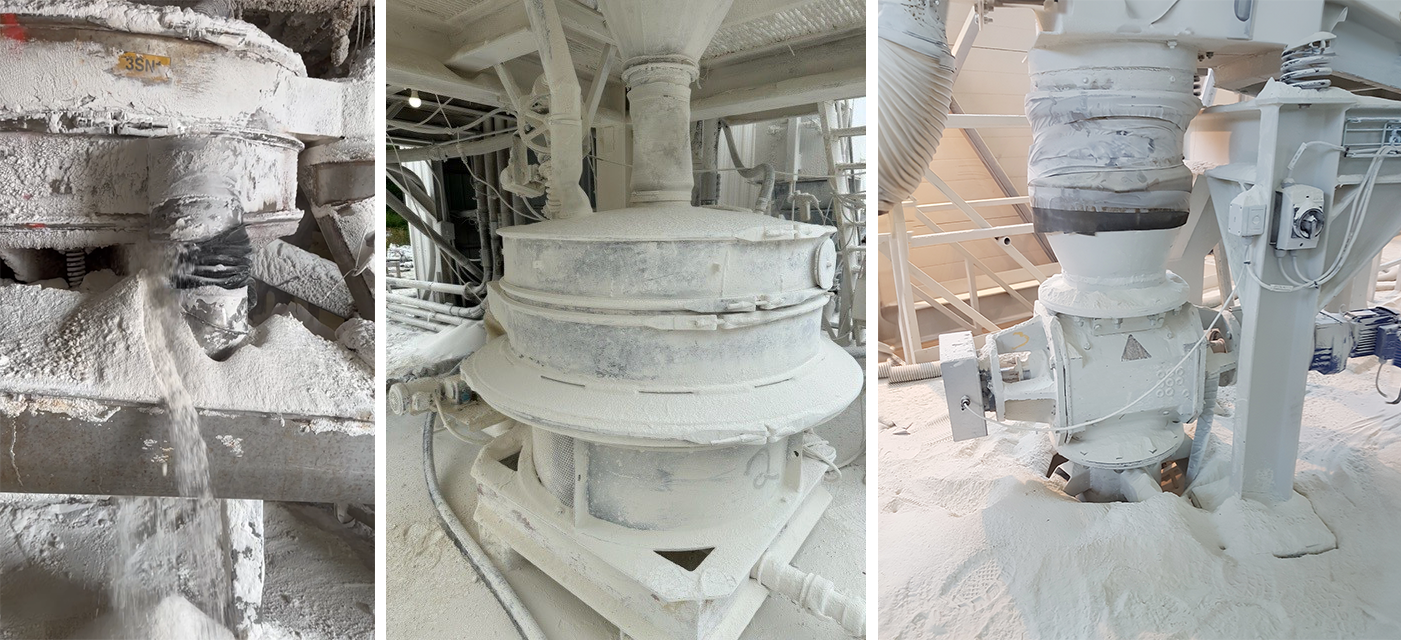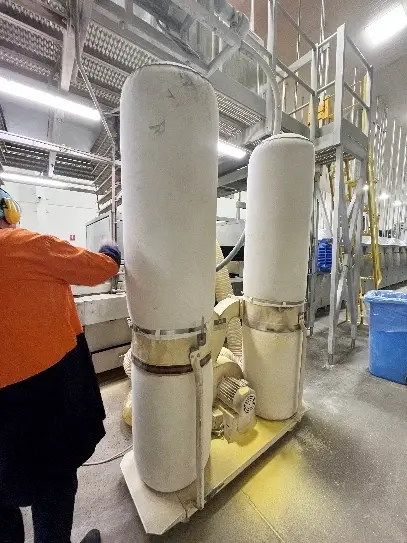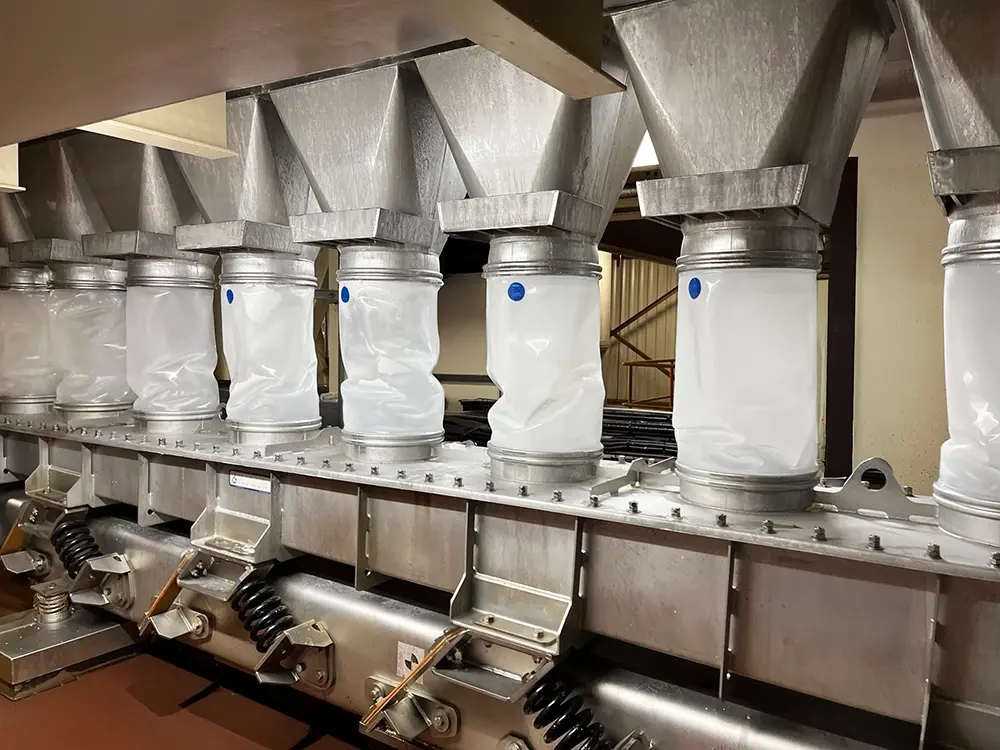Bulk processing plants often operate 24/7 and are fast-paced, high-pressure environments where workers face numerous daily hazards.
In processes involving powders, there is a strong overall focus on reducing combustible dust hazards and their associated explosion risks, which is understandable given that secondary explosions can destroy whole plants.
But on an individual production worker basis, aside from trips and falls, one of the most vital areas of protection that needs to be addressed is hand safety. Hand injuries can significantly impact both the workers themselves and the overall productivity of the plant.
Therefore, it is crucial for plant managers and safety professionals to assess the risks and implement effective strategies to safeguard the hands of process workers.
Common Hand Injury Risks For Bulk Processing Staff
 Process workers in bulk processing plants encounter various hazards that put their hands at risk. From sharp objects and protruding edges to heavy machinery and moving parts, the potential sources of hand injuries seem to be endless.
Process workers in bulk processing plants encounter various hazards that put their hands at risk. From sharp objects and protruding edges to heavy machinery and moving parts, the potential sources of hand injuries seem to be endless.
Whilst the installation of guarding on many pieces of equipment is necessary to protect staff during normal operation, there are times during maintenance or inspections when access is required, and hands can be placed in danger.
For example, changing a failed flexible connector can present significant hand danger for maintenance staff. If the connector is in a difficult-to-access location and is fastened with hose clips, using a screwdriver to remove, replace, and adjust the connection could risk serious injury from a simple slip with a sharp tool in hand—not an ideal situation.
Bag loading is another area where pinch-points on clamped or inflatable heads are notorious for causing hand and finger injuries.
The Danger of Equipment Transitions
Equipment transitions, where product flows from one machine to another, often pose a significant risk to the hands of process workers as these transitions often use removable flexible connectors.
Whilst this ‘removability’ allows access for freeing blockages or cleaning and maintenance, by its very nature, a removable flexible connector also allows access to potentially dangerous moving machinery like rotary knives or rotary valves. If a worker places their hand inside the process equipment at these locations, it can result in severe injuries, including crushing, lacerations, and amputations.
It is crucial for plant managers to understand the intricacies of each equipment transition point to effectively mitigate risks. Factors such as the proximity of moving parts to the transition area, the ease of access and the visibility for workers all play a role in determining the level of danger involved.
By conducting thorough risk assessments for each transition point, plant managers can tailor safety solutions to address specific hazards and ensure comprehensive protection for workers.
Implementing Effective Safety Solutions
Implementing effective safety solutions is one of the best ways to mitigate the danger of equipment transitions. For example, utilizing non-clamped, reliable, and robust flexible connectors makes installation safer, and the frequency of replacement will also be significantly reduced.
Additional layers of security can be added at higher-risk locations to limit access to authorized staff only, depending on your desired level of safety protocols.
Safer Flexible Connector Solutions at Equipment Transitions
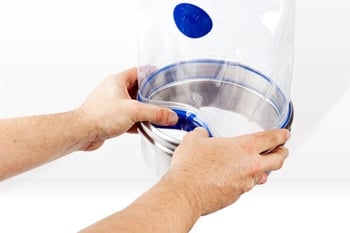 The BFM® fitting flexible connector system is world-renowned for being the best at eliminating dust leakage to make plants safer, but it is also one of the safest options available with regard to protecting staff and keeping their hands safe.
The BFM® fitting flexible connector system is world-renowned for being the best at eliminating dust leakage to make plants safer, but it is also one of the safest options available with regard to protecting staff and keeping their hands safe.
The standard snap-fit blue band BFM® fitting connector range is used extensively by thousands of manufacturers around the globe because it is so easy to fit. The cuff is snap-fitted to the inside of the specially-made spigot adapter at the top and bottom, and this secures it in place without the need for any hard-to-fit clamps using sharp screwdrivers. This makes BFM® fitting the ideal solution for hard-to-reach locations or simple transitions without dangerous machinery above or below it.
The durability of the Seeflex range of materials also means they require far less frequent replacements than most other products on the market.
Additional Safety Options Available For High-Risk Locations
For locations where there is heightened concern for hand safety, such as above rotary valves or similar machinery, BFM® fitting provides a range of additional safety enhancement options:
Tool Release (TR):
 All of the BFM® fitting connector range can be supplied in a ‘TR’ version. The snap-fit cuffs on a TR connector are much firmer, making them virtually impossible to release manually. A hole is made in the top ridge of the BFM® spigot adapter where the cuff sits, and to remove the TR connector, a specially shaped tool must be inserted through the hole to release the tension of the cuff. The special TR tool is designed to be kept securely by a supervisor to ensure that any access to the dangerous location is authorized.
All of the BFM® fitting connector range can be supplied in a ‘TR’ version. The snap-fit cuffs on a TR connector are much firmer, making them virtually impossible to release manually. A hole is made in the top ridge of the BFM® spigot adapter where the cuff sits, and to remove the TR connector, a specially shaped tool must be inserted through the hole to release the tension of the cuff. The special TR tool is designed to be kept securely by a supervisor to ensure that any access to the dangerous location is authorized.
The TR tools are available in standard straight or a uniquely shaped ‘Smiley Face’ version (shown adjacent), which cannot be substituted with an improvised tool, adding an even greater level of security. The TR holes for either version can be retrofitted to existing spigots to allow the use of TR connectors, and new spigots can be purchased from BFM® fitting with the appropriate TR holes pre-drilled/punched.
TR Lock-Out Safety System:
 If there is still a concern about staff obtaining access to the TR tools for connector removal at risky locations, the TR Lock-Out Safety System is a low-cost additional safety layer that can be added to any Tool Release installation. The TR Lock-Out Safety System consists of a small elliptical tube that is simply welded over the top of a TR hole on the BFM® spigot. The tube has a hole at the top and bottom through which any padlock can be inserted (up to a 6.5mm shank). The padlock key/lock combination can then be held securely by an approved manager so all access to remove the connector with the TR Tool can be monitored.
If there is still a concern about staff obtaining access to the TR tools for connector removal at risky locations, the TR Lock-Out Safety System is a low-cost additional safety layer that can be added to any Tool Release installation. The TR Lock-Out Safety System consists of a small elliptical tube that is simply welded over the top of a TR hole on the BFM® spigot. The tube has a hole at the top and bottom through which any padlock can be inserted (up to a 6.5mm shank). The padlock key/lock combination can then be held securely by an approved manager so all access to remove the connector with the TR Tool can be monitored.
Pneumatic Monitoring System:
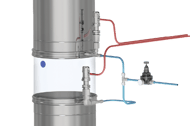 This is the ultimate in BFM® fitting flexible connector security system. The Pneumatic Monitoring System will alert you when any BFM® fitting connector is removed or is not inserted correctly. Pressurised air is pumped between the flexible cuff of the BFM® connector and the spigot. Air-line sensors (pressure switches) immediately detect if this outward pressure is released as the connector cuff begins to get pushed inwards, setting off an alarm and/or shutting off any moving parts below.
This is the ultimate in BFM® fitting flexible connector security system. The Pneumatic Monitoring System will alert you when any BFM® fitting connector is removed or is not inserted correctly. Pressurised air is pumped between the flexible cuff of the BFM® connector and the spigot. Air-line sensors (pressure switches) immediately detect if this outward pressure is released as the connector cuff begins to get pushed inwards, setting off an alarm and/or shutting off any moving parts below.
Bulk Bag Loader:
The BFM® fitting Bulk Bag Loader uses the strength and flexibility of our Seeflex material to provide an inflatable loading head that requires no clamping or bracing, so there are no potential pinch-points for hands during the bag loading process.
Proactive Safety Measures Critical To Hand Safety
Addressing the potential hand dangers of product and equipment transitions is critical to ensuring worker safety. These transitions can involve moving parts and potential pinch points. Implementing effective safety solutions, such as safety guards, warning signs, and proper training, can significantly reduce the risk of accidents during these transitions.
Combining proactive safety measures like these with quality flexible connectors at dangerous transitions is the key to protecting process workers' hands in bulk processing plants. By investing in the right equipment and fostering a safety-conscious culture, plant managers can create an environment where workers can perform their duties with confidence and peace of mind.
Find out more about how the BFM® fitting system helps protect your staff.

